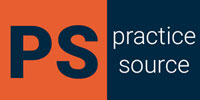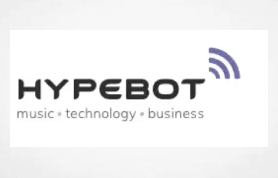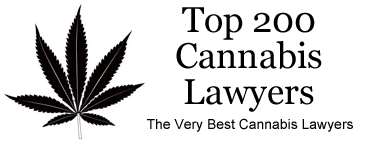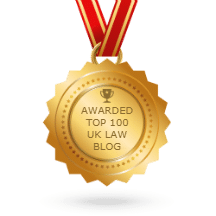Great article from Hypebot that’s easy to comprehend
Want to clear a sample for songs you are working on? This guide breaks down everything you need to know to do it the right way.
Musician’s Guide to Clear a Sample For Songs
by Philip Kinsher via Disc Makers Blog
Some of the most iconic music you’ll ever hear uses samples — a.k.a. small snippets of music from another artist’s sound recording. Is sampling music legal? While the inspiration for using samples of copyrighted music in your music may come fast and easy, the work of legally and respectfully incorporating a music sample in your work can be much more complicated. It’s very important to start early, contact the copyright holder or the sample owner who owns the track you want to use, and come to an agreement for licensing long before your song is released. If you don’t do things right, you could face legal trouble, financial, and career messes that aren’t easy to clean up — and disruption in how your tracks are distributed.
Even if you’re an independent artist, it’s worth taking steps to protect your work and career. Here are some tips and guidelines to help you license samples with ease:
What does it mean to clear a sample?
When you incorporate someone else’s recorded work into your own productions, it’s important to go through proper channels to protect your music legally. In broad strokes, clearing a sample means identifying all parties who own some part of the track you want to sample, and coming to agreements with all of them regarding how you can and cannot publicly use their material, and how any proceeds that come from your new music will be split. Agreements may also include explicit language regarding who owns which aspect of the new song you’re creating. Again, clearing a sample means getting permission to use all aspects of it — both the mechanical recording and the underlying composition — so make sure you do your research and reach out to everyone involved. Whether you’re learning how to write a song or refining your existing music, these steps are essential.
Steps to clear a sample for your song or beat
1. Identify the sample owners.
As you learn how to sample music, the owner might be an individual or a band, one indie record label or a large corporate entity — or any combination thereof. Do your research and make sure you fully understand who owns every aspect of the sample you’re trying to clear—this means the recording itself and the musical composition. Good places to look for key info include music rights organizations like ASCAP, BMI, SESAC, SOCAN, and Harry Fox — though sometimes a simple web search can get you the info you need.
2. Request permission to use the sample.
Once you know who you’re contacting, reach out with a concise, respectful, and informative request. Information like the length of sample you’re using, who is working on your new song, and what you’re planning to do with it can be very helpful. Also, be sure to have a listening link ready to share if needed.
3. Negotiate the sample clearance agreement.
If copyright holders decide they want to move forward and let you clear the sample for your work, compensation will come into play. You may be asked to pay a lump sum, a percentage of revenue resulting from the song, or both. If you feel you need to negotiate amounts, do so respectfully and reasonably, and try to do research on industry standard rates to make sure the deal is fair for all involved. Make sure that any agreement clearly lays out who owns which aspects of your track, and exactly how you are permitted to use the sample in your work. Confused? Before you send out that sample request and secure the rights, get an entertainment lawyer or sampling consultant to look things over to be sure you know what you’re signing.
How much does it cost to clear a sample?
The price you’ll pay to use someone else’s recording in your own music depends on a wide range of factors:
- Whether or not the recording you want to sample is super popular or obscure and unknown
- How popular the artist or artists who created your chosen sample are
- How many different parties own a piece of the recording you’re sampling and licensing
- How you intend to use your final music, and how big or small a role the sample will play in that final product
To make sure you can afford to clear your sample, timing is key. Research if anyone else has used the sample you’re trying to clear, and if you can find out how much they paid. It can also be helpful to research how much similar tracks have cost to sample. The earlier you start the clearing process, the better your chances of knowing whether you can afford to clear your sample before your song is finished, released, replicated, and distributed through music distribution services.
Alternatives to clearing a sample
What happens if clearing a sample costs too much, requires too much administrative hassle, or just takes too long? When clearing the sample you want isn’t a realistic option, there are workarounds worth considering. You can always look through royalty-free sample and loop libraries to see if you can find something that captures the same spirit and vibe of your sample of choice.
Another option is to create an original composition that harnesses what you find most compelling about the sample, or hire an experienced producer to do it for you. If you go this route, though, just be sure that your new piece of music is different enough that you won’t run into issues related to plagiarism or unauthorized use.
What happens if you don’t clear a sample?
If you don’t go through the process of legally clearing your sample — and if your song stays under the radar — it’s possible that nothing bad will happen. But don’t count on it. Working with uncleared samples, especially if you’re gaining lots of visibility and making money, can open the floodgates for legal trouble and financial problems. Using uncleared samples can also damage your reputation in the music industry, and your public image as well.
Especially if your song with an uncleared sample goes big, you could find yourself having to deal with lawsuits, fines, and takedowns of your music from distribution platforms and streaming sites like SoundCloud and Spotify. The Verve’s “Bittersweet Symphony,” for example, was a massive hit that used a sample which hadn’t been fully cleared. It took years, millions of dollars, and complex negotiations with the Rolling Stones to get things settled. An easier route is to do your homework ahead of time and make sure you have all your legal permissions in place.
Navigating sample clearance with confidence
Clearing samples for your work can feel complex and intimidating, but with research, diligence, and knowledge, you can navigate it with success. From mastering in music, clarifying how you’re going to use a sample to discovering who owns it and making contact for negotiation, the process can become second nature for dedicated indie artists. It’s worth it, both to avoid future headaches, and for the peace of mind of knowing that your digital releases — and CDs and vinyl you have created with Disc Makers — are all legally sound.
Philip Kinsher is a writer, editor, and musician with a predilection for YA Sci-fi Fantasy books and rock and roll. And golf and pickleball.




